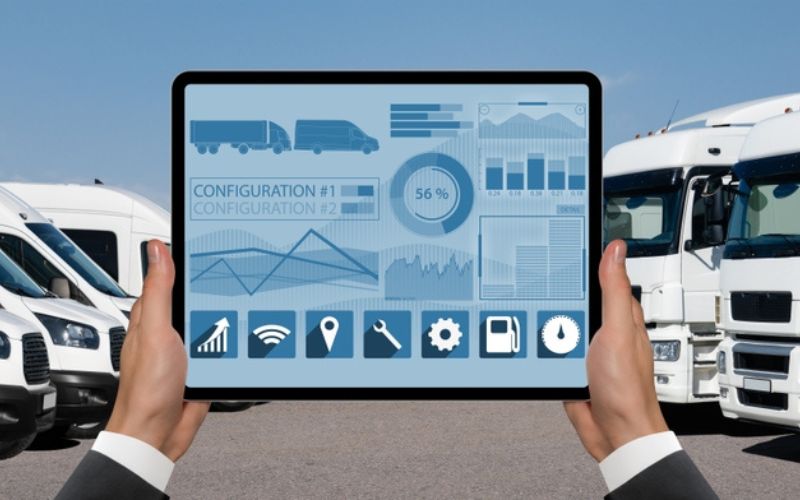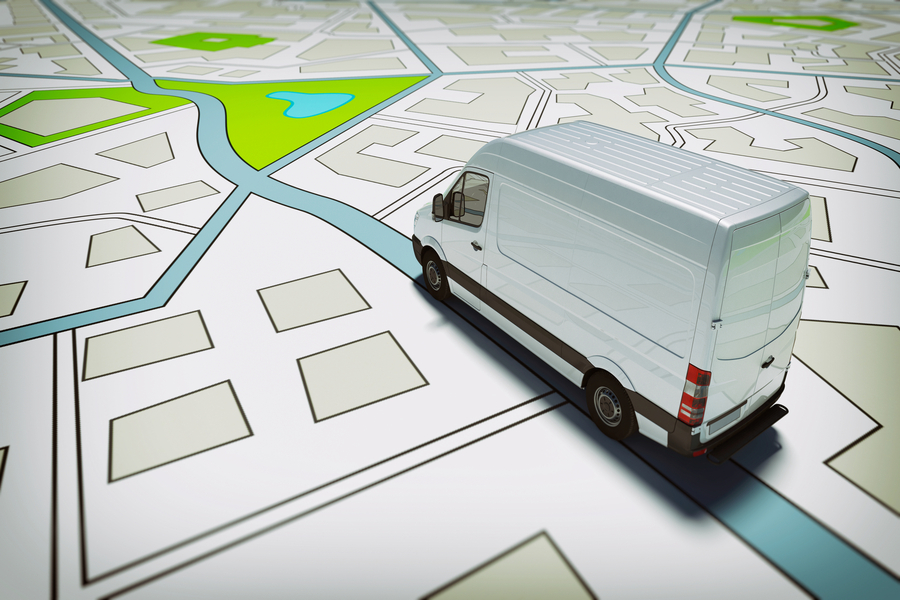
Safety is a critical part of a fleet manager's role, but for significantly improved safety, safety needs to be entrenched at every level of the organization, including drivers. It needs to be embedded in the way things are done, so best practices don't slip as soon as things get busy, and so fleet vehicles and equipment don’t become unsafe because the maintenance program didn't work as planned.
Safety initiatives may yield positive results initially, as the company is focused on it, but the results can easily dwindle, leaving you back where you were before - having spent money on an initiative that was only a temporary bandaid. For example, when looking to improve driver safety, you might have an educational campaign on driver behavior like speeding. People may adjust their behavior while the campaign is on, but over time, if workload is heavy, and they are rushed, and there are no ongoing reminders or checks in your system, it can be easy to slip into bad habits.
Fleet safety management is complex enough as it is; fleet safety technology solutions can take some of the load off of fleet managers and offer new levels of protection.
That's where technology solutions can offer great success. The consistency of AI technology ensures safety doesn't slide, and removes the potential for human error or misjudgment. Human error doesn't mean negligent, and is not a negative thing - we're all human, and can make mistakes. Forward collision warning systems or blind spot detection alerts are effective because they catch what a driver might miss or not notice in time. It doesn't make someone a bad driver, it just is another tool to help. Technology can assist in areas where a mistake can become an issue.
Technology also addresses one of the biggest pain-points of safety programs. Companies want to protect fleet operators and other employees, but safety processes can result in loads of additional paperwork to ensure systems are working as intended. On top of already full days, it can be hard for fleet managers to get to these, and pay them the close attention they deserve. However, if a system is allowed to slip, then it isn't really a working system, and you aren't getting any benefit.

There are a few solutions that a fleet manager may want to consider, to 'engineer in' safety for the entire fleet.
Driver monitoring solutions enable monitoring unsafe driver behaviors, to alert and correct.
These work by allowing fleet managers to see what is happening in a vehicle and spot poor driver behavior. Some record for documentation purposes. A downside is that the fleet manager still needs to be watching or combing through video records, unless these are tied into a telematics fleet management software solution, which can set up alerts for certain identified behaviors.
Fatigue monitoring systems use sensors to spot driver fatigue symptoms, like erratic driving behavior and heavy eyelids or closed eyes. They can alert both the driver and the fleet manager.
There are a few different systems to avoid collisions. These new technologies all use sensors and algorithms to predict high chances of collisions, and take steps to address and prevent an incident. They will use different combinations of GPS technology, sensors, cameras, and other solutions to identify a probable impact, and then automatically brake, slow or perform another action to prevent it.
Adaptive cruise control uses radar, cameras and other sensors to slow and adjust speed to keep a safe distance from a vehicle in front, while automatic emergency braking is another example, which stops vehicles before a crash, by leveraging radar and cameras. Lane guidance systems, such as lane departure warnings, prevent drifting into other lanes unintentionally.
This is perhaps the most powerful of the technology solutions, since it is the most broad and comprehensive solution, and addresses systemic issues in company safety. The technology in telematics systems has advanced rapidly in recent years, so these solutions can offer bigger benefits than ever before.
Telematics solutions with fleet management software help with all aspects of fleet operations that can impact your ability to achieve a safe fleet, while simultaneously reducing administrative hassle, which is a common block to fleet safety.
Telematics systems collect data on location, speed, harsh braking or acceleration, and more, so fleet managers can now have access to driver behavior patterns - something they were unable to assess in the past. High risk drivers can be accurately identified, and sent for extra driver training. Telematics systems can also offer in-cab coaching, to immediately correct poor driver behavior, because it is important to fix issues as soon as possible to prevent an accident.
It integrates with many operational systems and procedures for maximum benefit. It can tie in with route optimization to ensure drivers aren't given unrealistic delivery deadlines that may put pressure on to speed.

It ties in with pre-trip vehicle inspection reports and the planned or predictive maintenance program, saving time on these procedures while ensuring they are done, and done right, so vehicles are safe to use and vehicle performance is optimal to prevent unnecessary incidents. All safety documentation is tracked, with information automatically exported into reporting for fleet management reports.
Telematics solutions can enhance their functionality by integrating with video telematics, allowing them to link with dash cams. This integration can automate driver coaching as necessary, thereby freeing up fleet managers even more to focus on optimizing their operations and enhancing safety.
Alerts can be set up so nothing gets forgotten, and reporting functionality enables informed decision-making. Safety initiatives can be accurately monitored and assessed, so no money is wasted on ineffective efforts. Key performance indicators can be identified and measured.
1. Why is embedding safety culture important in fleet management? Ensuring safety practices are deeply ingrained across the organization, including drivers, helps maintain consistent adherence to safety protocols, even during busy periods, reducing the risk of accidents and incidents.
2. How do safety initiatives sometimes fail to achieve long-term results? Safety initiatives might show initial improvements, but without ongoing reminders or checks, employees can revert to old habits. This underscores the need for sustained efforts and reminders.
3. How can technology contribute to fleet safety enhancement? Technology solutions like collision avoidance systems, telematics, and dash cams offer continuous monitoring, data-driven insights, and automated alerts to prevent accidents and improve overall safety.
4. What is the role of AI in fleet safety? AI ensures consistent safety monitoring, minimizing human error and supporting drivers' decision-making without attributing negligence.
5. How do fleet safety technologies integrate with operational processes? Fleet management software and telematics integrate with route optimization, maintenance planning, and reporting, streamlining operations while enhancing safety.
6. How do telematics systems enhance driver behavior assessment? Telematics collect data on driver behavior patterns, enabling accurate identification of high-risk drivers and facilitating targeted training interventions.
7. What advantages do technology solutions offer in terms of paperwork reduction? Technology automates safety processes, reducing the paperwork burden on fleet managers while maintaining effective safety protocols.
8. What's the significance of data-driven insights in fleet safety? Data from telematics systems and technology solutions allow informed decision-making, measurement of safety initiatives, and identification of areas for improvement.
9. How can technology contribute to ongoing driver coaching? Technology solutions, including dash cams and telematics, offer in-cab coaching to immediately correct poor driver behavior, enhancing safety on the road.
10. How do technology solutions improve the sustainability of safety efforts? Technology ensures consistent safety monitoring, automated alerts, and ongoing coaching, addressing potential lapses in safety practices that might occur over time.
At Connected Vehicles, we can help you implement a fleet management system to enhance safety and protect drivers. To get the best results, it's important to have integrated fleet management software, so you can leverage multiple safety systems at the same time, seamlessly.



[…] solution to create more buy-in that is expected in the future of fleet management is gamification. Telematics technology allows not only for in-cab automated coaching, but for […]